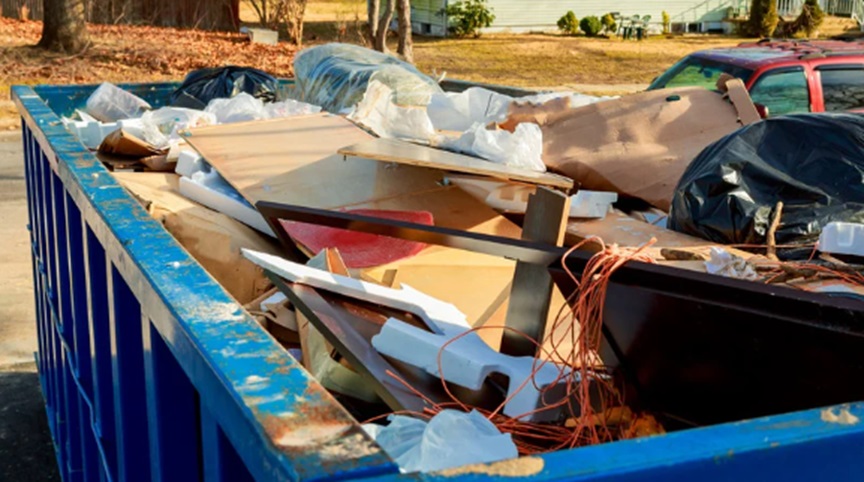When renting a dumpster for your residential or commercial project, it’s easy to focus only on the size of the container and overlook another crucial aspect—weight limits. Whether you’re clearing out construction debris, household junk, or yard waste, every dumpster has a maximum weight capacity. Exceeding that limit could lead to unexpected fees, delays, or even safety concerns.
If you’re planning a cleanup project and looking for a waste dumpster rental in Cumming, it’s important to understand how weight limits impact your rental experience from both a logistical and cost perspective.
What Are Dumpster Weight Limits?
Dumpster weight limits refer to the maximum amount of weight that a rental container can safely hold. These limits are typically measured in tons and are determined based on the size of the dumpster, the type of materials being disposed of, and local landfill or transfer station guidelines.
Why Weight Limits Matter
Knowing and adhering to weight limits helps ensure your dumpster can be safely transported and dumped without complications. Overloaded containers may pose safety risks to drivers and cause damage to roads or property. In many cases, additional charges are applied per ton over the limit, which can significantly increase your project budget.
Common Materials and Their Weight Impact
Before filling up your rental dumpster, consider the type of materials you plan to discard. Some items weigh much more than others and can fill a dumpster’s weight limit faster than its physical volume.
Heavier Materials
Materials like concrete, bricks, roofing shingles, and soil are incredibly dense and can easily exceed weight limits in even the largest containers. Even if the dumpster appears half full, you might already be nearing or surpassing the allowed weight.
Lighter Debris
Household junk, furniture, yard trimmings, and packaging materials are lighter and more volume-based. These items are less likely to exceed weight limits but can still add up in large quantities.
Choosing the Right Dumpster Size
Selecting the correct dumpster size isn’t just about capacity—it also affects how efficiently you can manage the weight of your waste. A smaller container filled with heavy materials might exceed its weight limit, while a larger container gives you room to distribute that weight more evenly.
Consider Project Scope
When deciding on the right size, think about both the type and volume of material. If your project includes demolition or landscaping, speak with a professional rental provider to ensure you choose a container suited to heavier waste loads.
How to Avoid Overage Fees
No one wants a surprise on their final invoice. To keep your project on track and your budget intact, there are some practical steps you can take.
Know What You’re Disposing
Take inventory of the types of debris your project will generate. This will help determine whether you’re dealing with mostly light trash or dense materials that require more weight-conscious planning.
Distribute Weight Evenly
Instead of dumping everything into one corner, distribute materials throughout the dumpster. This helps avoid shifting during transport and makes it easier for drivers to load safely.
Importance of Professional Assistance
Professionals who handle waste management can guide you in choosing the appropriate dumpster size and weight limit for your specific project. Their experience helps avoid costly mistakes and ensures that all waste is handled in accordance with local regulations. For example, working with providers familiar with both junk removal logistics and site-specific needs adds an extra layer of reliability.
Proper waste disposal is a serious matter, especially in areas with strict regulations. That’s why many local businesses and contractors rely on experienced providers who understand everything from haul-off limits to landfill requirements. It’s a smarter move than trying to navigate it all alone—especially when the scope of work gets complex.
Environmental and Safety Considerations
Exceeding weight limits doesn’t just impact your wallet; it can also strain landfill resources and increase emissions during transportation. Responsible waste handling supports broader sustainability goals and keeps your worksite safer.
In addition to cost and safety, regulatory compliance plays a role. Certain locations may impose penalties for overfilled dumpsters or illegal disposal, making it critical to work with professionals who stay informed on the latest rules.
For projects involving large-scale disposals, it’s important to assess both the hauling capacity and disposal logistics involved. This level of detail is often overlooked in general planning, but it’s essential for proper commercial waste removal services.
In more regulated environments, like municipalities or construction zones, waste overage violations can lead to fines or rejected loads. According to EPA guidelines on waste management, proper material handling can significantly reduce your environmental impact.
Also Read: Benefits of Renting a Dumpster for Proper Waste Disposal
Conclusion
Understanding and managing weight limits in dumpster rentals is more than just a fine-print detail—it’s a key factor in the success and efficiency of your cleanup project. From choosing the right container size to monitoring material type and distribution, every step matters. Avoiding overage fees, ensuring safe transport, and staying within regulatory compliance are all easier when you partner with professionals who handle the heavy lifting for you.















